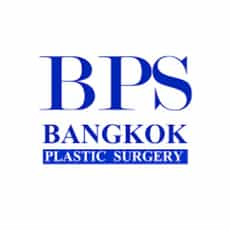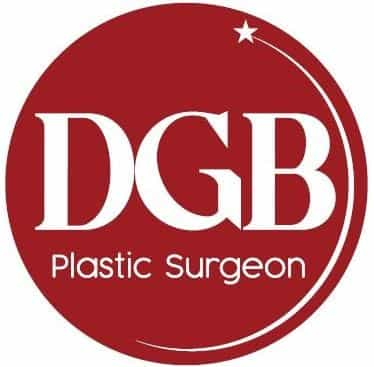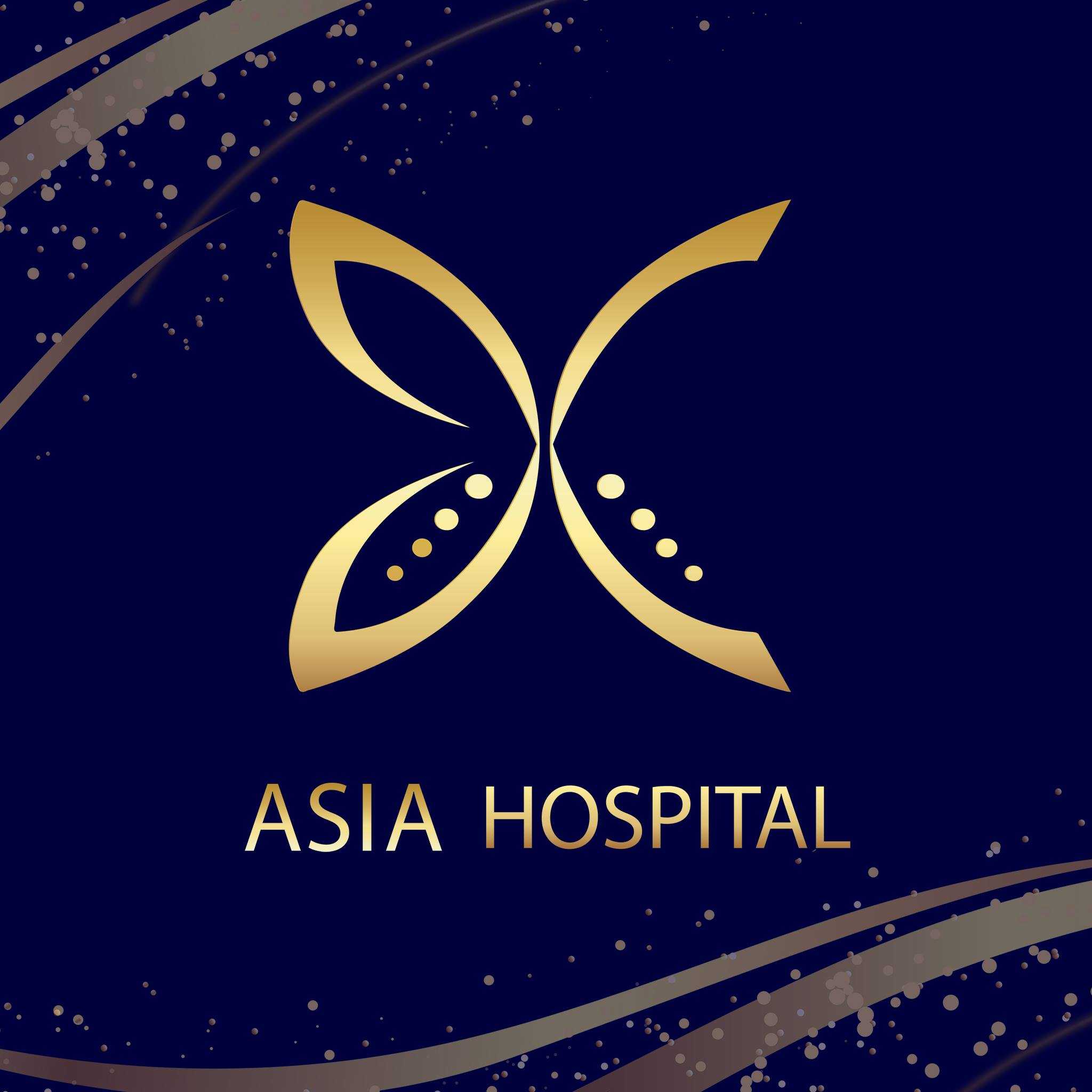Achieve Your Dream Look: Facelift Excellence in Thailand

Considering a facelift in Thailand has become an increasingly popular option for individuals seeking to rejuvenate their appearance. Known for its world-class medical tourism industry, Thailand offers a compelling blend of high-quality surgical expertise, state-of-the-art facilities, and significantly more affordable prices compared to Western countries. This comprehensive guide will explore various aspects of getting a facelift in Thailand, addressing common questions and providing detailed insights to help you make an informed decision. We'll delve into everything from surgeon qualifications and costs to recovery expectations and potential risks, ensuring you have a clear understanding of what to expect from a facelift procedure in this vibrant Southeast Asian nation.
What are the key reasons people choose Thailand for a facelift?
"People often choose Thailand for a facelift due to its affordable costs, highly experienced surgeons, modern accredited hospitals, and the opportunity to combine surgery with a relaxing vacation."
Thailand has established itself as a premier destination for medical tourism, particularly for cosmetic procedures like facelifts. One of the primary attractions is the significant cost savings, with procedures often being 50-70% less expensive than in countries like the US, UK, or Australia. Despite the lower price, the quality of care is often on par with Western standards, as many Thai plastic surgeons have received international training and are members of global professional organizations.
Furthermore, Thailand boasts numerous internationally accredited hospitals and clinics equipped with advanced technology. The country's strong hospitality sector also plays a role, offering luxurious recovery environments and the chance to enjoy a beautiful vacation before or after the procedure, making the overall experience more appealing for international patients.
How much does a facelift typically cost in Thailand?
"A facelift in Thailand generally costs between $2,500 and $12,000, depending on the type of facelift, the clinic's reputation, and the surgeon's experience, which is significantly lower than in Western countries."
The cost of a facelift in Thailand varies widely based on several factors. A traditional facelift might range from $2,500 to $8,000, while a mini facelift could be between $3,700 and $6,000. More complex procedures like a deep plane facelift can go up to $11,800. These prices typically include surgeon fees, anesthesia, operating room costs, and often post-operative care, medications, and sometimes even accommodation and airport transfers, especially in all-inclusive packages.
In comparison, a facelift in the US or UK can range from $17,000 to $48,000, making Thailand a remarkably cost-effective option without necessarily compromising on quality. The lower overhead costs, competitive market, and government support for medical tourism contribute to these attractive prices.
What types of facelift procedures are available in Thailand?
"Thailand offers a comprehensive range of facelift procedures, including traditional facelifts, mini facelifts, deep plane facelifts, and non-surgical options, tailored to individual needs."
Thai clinics are well-versed in various facelift techniques to address different degrees of aging and patient preferences.
- Traditional Facelift (Rhytidectomy): This classic approach involves incisions along the hairline and around the ears to lift and tighten the skin and underlying tissues (SMAS layer) of the mid-face, jowls, and neck. It provides the most dramatic and long-lasting results for significant signs of aging.
- Mini Facelift: A less invasive option with shorter incisions, typically focusing on the lower face and jawline to address early signs of sagging. It's ideal for individuals with moderate jowling and those seeking a quicker recovery.
- Deep Plane Facelift: This advanced technique involves lifting deeper layers of facial tissue, providing a more comprehensive and natural-looking rejuvenation by repositioning muscle and fat, rather than just pulling the skin. It often results in longer-lasting outcomes.
- Neck Lift: Often performed in conjunction with a facelift, a neck lift targets loose skin, excess fat, and muscle banding in the neck area to create a smoother, more defined jawline and neck profile.
- Non-Surgical Facelift Options: For those not ready for surgery, clinics in Thailand also offer non-invasive treatments like Ultherapy, Thread Lifts, dermal fillers, and Botox to provide a temporary lift and improve skin quality. These are generally less expensive and have minimal downtime.
Are plastic surgeons in Thailand well-qualified and experienced for facelifts?
"Yes, many plastic surgeons in Thailand are highly qualified, board-certified, and possess extensive experience in performing facelifts, with many having trained internationally and being members of global professional societies."
Thailand's reputation as a hub for cosmetic surgery is underpinned by the expertise of its surgeons. Many Thai plastic surgeons undergo rigorous training, often including fellowships and specialized programs in countries like the USA, Canada, South Korea, and Australia. They are typically Board-Certified Plastic Surgeons by the Medical Council of Thailand, a stringent regulatory body.
Furthermore, a significant number of these surgeons are active members of prestigious international organizations such as the International Society of Aesthetic Plastic Surgery (ISAPS) and the American Society of Plastic Surgeons. This affiliation indicates adherence to global standards of practice and a commitment to ongoing professional development. It's common for experienced surgeons in Thailand to have performed thousands of cosmetic procedures, including a high volume of facelifts, demonstrating their practical expertise.
What is the typical recovery time after a facelift in Thailand?
"The initial recovery time for a facelift in Thailand typically involves 1-2 weeks of noticeable swelling and bruising, with most patients able to resume light activities within 10-14 days, and full recovery taking several months."
Recovery from a facelift procedure is a gradual process. Immediately after surgery, patients may experience swelling, bruising, and some discomfort, which can be managed with prescribed pain medication. A compression garment or bandages are usually worn for the first few days to minimize swelling and support the healing tissues.
- First Week: Swelling and bruising will be most prominent. Patients are advised to keep their head elevated, rest, and avoid strenuous activities. Stitches are typically removed around 5-7 days post-op.
- Two to Three Weeks: Most visible bruising will have faded, and significant swelling will have reduced. Patients can often return to light work or daily activities, but strenuous exercise should still be avoided. Numbness or tightness in the face is normal and gradually resolves.
- Several Months: Residual swelling may take several months to fully subside, and the final results of the facelift will become apparent as the tissues settle. It's crucial to follow all post-operative instructions, including caring for incisions and attending follow-up appointments with the surgeon, to ensure optimal healing and results.
What are the potential risks and complications of a facelift in Thailand?
"While generally safe, facelift surgery in Thailand carries similar potential risks to any surgical procedure, including infection, hematoma, nerve injury, scarring, and unfavorable aesthetic outcomes, which are minimized by choosing a qualified surgeon and accredited facility."
Like all surgical interventions, a facelift has inherent risks, regardless of where it is performed. Patients considering surgery in Thailand should be aware of these potential complications:
- Hematoma: A collection of blood under the skin, which may require drainage.
- Infection: While rare, infection can occur at the incision sites. Antibiotics are often prescribed to prevent this.
- Nerve Injury: Temporary or, in very rare cases, permanent damage to facial nerves can lead to weakness or paralysis of facial muscles.
- Scarring: While incisions are strategically placed to be discreet, some visible scarring is possible. Keloid or hypertrophic scars are a rare but potential risk, especially for individuals prone to them.
- Numbness: Temporary or persistent numbness in areas of the face is common due to nerve disruption during surgery.
- Asymmetry: Slight differences between the two sides of the face can occur.
- Skin Necrosis: Very rare, but a small area of skin may die due to impaired blood supply, particularly in smokers.
- Anesthesia Risks: Adverse reactions to anesthesia, though rare, can include respiratory issues or allergic reactions.
Choosing a board-certified plastic surgeon with extensive experience in facelifts and undergoing the procedure in a JCI-accredited hospital significantly reduces these risks.
How do I choose a reputable clinic and surgeon for a facelift in Thailand?
"To choose a reputable clinic and surgeon for a facelift in Thailand, look for board certification, international accreditations (like JCI), extensive experience specifically with facelifts, positive patient reviews, and clear communication from the medical team."
Selecting the right clinic and surgeon is paramount for a successful and safe facelift experience in Thailand.
- Board Certification: Ensure your chosen surgeon is certified by the Medical Council of Thailand in Plastic and Reconstructive Surgery. This indicates they have met rigorous training and ethical standards.
- International Accreditation: Prioritize clinics and hospitals with international accreditations, such as Joint Commission International (JCI). JCI accreditation signifies adherence to global standards for patient safety and quality of care.
- Experience and Specialization: Look for surgeons who have a specific focus and extensive experience in performing facelifts. Ask to see before-and-after photos of their previous facelift patients.
- Patient Reviews and Testimonials: Research online reviews on independent platforms and read testimonials. This can provide insights into other patients' experiences with the surgeon and clinic.
- Clear Communication: The medical team should be able to communicate effectively in English, ensuring you understand all aspects of the procedure, risks, and post-operative care. Consider having a video consultation before traveling.
- All-inclusive Packages: While cost-effective, thoroughly review what is included in any package to avoid hidden fees. Ensure it covers consultations, surgery, anesthesia, hospital stay, post-op care, and follow-up appointments.
What should I expect during the initial consultation for a facelift in Thailand?
"During the initial facelift consultation in Thailand, you should expect a thorough medical history review, a physical examination of your face and neck, a discussion of your aesthetic goals, and a detailed explanation of the proposed surgical plan, including risks, benefits, and costs."
The consultation is a critical step in the facelift journey. It's an opportunity for both you and the surgeon to determine if the procedure is suitable and to align on expectations.
- Medical History: The surgeon will review your complete medical history, including any previous surgeries, medications, allergies, and lifestyle habits (e.g., smoking).
- Physical Examination: A detailed examination of your facial structure, skin elasticity, and the extent of sagging will be conducted. The surgeon may take photos for planning and comparison.
- Discussion of Goals: You'll discuss your desired outcomes and any specific concerns you have. The surgeon will assess whether your expectations are realistic and achievable.
- Treatment Plan: The surgeon will explain the recommended facelift technique, the incision placement, and what the procedure entails. They will also discuss potential alternatives if appropriate.
- Risks and Benefits: A transparent discussion of the potential risks, complications, and benefits of the facelift will be provided.
- Cost and Logistics: The total cost, payment options, and logistics for the surgery and recovery (hospital stay, follow-up appointments) will be outlined. This is also your chance to ask any questions you have.
How long should I plan to stay in Thailand for a facelift?
"Patients typically need to stay in Thailand for at least 10-14 days for a facelift procedure, allowing for pre-operative consultations, the surgery itself, and sufficient time for initial recovery and follow-up appointments before being cleared to fly home."
The duration of your stay in Thailand for a facelift is crucial for a safe and comfortable experience.
- Pre-operative period (1-2 days): This allows for arrival, settling in, and a final in-person consultation, blood tests, and any necessary pre-operative assessments.
- Surgery and Hospital Stay (1-2 nights): The facelift procedure itself usually takes several hours, and most patients will stay in the hospital for one or two nights for monitoring, especially if general anesthesia is used.
- Initial Recovery (7-10 days): After discharge, you'll need to recuperate at your hotel or a recovery facility. This period is essential for managing initial swelling and bruising, attending follow-up appointments for stitch removal, and ensuring your healing progresses normally.
- Fit to Fly Clearance: Before you can fly home, your surgeon will need to confirm that you are "fit to fly," which usually means significant swelling has subsided and there are no immediate complications. This typically happens around 10-14 days post-surgery. Rushing this can lead to complications, especially with pressure changes on an airplane.
It's often recommended to build in a few extra days for relaxation and light sightseeing once you feel well enough, avoiding strenuous activities.
Can I combine a facelift with other cosmetic procedures in Thailand?
"Yes, many patients choose to combine a facelift with other cosmetic procedures in Thailand, such as eyelid surgery, neck lifts, or breast augmentation, to achieve more comprehensive aesthetic results, provided they are in good health and the surgeon deems it safe."
Combining procedures is a common practice in medical tourism in Thailand, allowing patients to achieve more extensive results and minimize overall downtime and travel costs.
- Common Combinations: A facelift is frequently combined with a neck lift to address laxity in the neck, blepharoplasty (eyelid surgery) to rejuvenate the eye area, or brow lift to raise sagging brows. Some patients may also opt for breast augmentation or liposuction during the same surgical session.
- Safety Considerations: The feasibility of combining procedures depends on your overall health, the complexity of each procedure, and the surgeon's assessment. A responsible surgeon will prioritize your safety and may recommend staging procedures if the combined surgical time or recovery burden is too great.
- Benefits: Combining procedures can lead to a more harmonious overall aesthetic improvement, reduce the number of times you need to undergo anesthesia, and condense your recovery period into one timeframe. However, it can also lead to a longer and potentially more challenging recovery.
What is the typical follow-up care like after a facelift in Thailand?
"Follow-up care after a facelift in Thailand typically includes multiple post-operative appointments with the surgeon for wound checks, stitch removal, and progress monitoring, along with detailed instructions for at-home care and managing discomfort."
Comprehensive follow-up care is a crucial component of the facelift process in Thailand.
- Hospital Stay: During your initial hospital stay (1-2 nights), nurses will monitor your vital signs, manage pain, and provide initial wound care.
- First Week Post-Op: You will have appointments with your surgeon within the first week to assess healing, remove bandages, and remove stitches (usually around day 5-7). Instructions for cleaning incisions and managing swelling will be provided.
- Subsequent Appointments: Depending on your recovery progress, you may have one or two more follow-up visits before you depart Thailand. The surgeon will check for any complications, answer questions, and ensure you are cleared for travel.
- At-Home Care: You will receive detailed instructions on how to care for your incisions, apply cold compresses to reduce swelling, avoid strenuous activities, and recognize any signs of complications (e.g., infection).
- Remote Follow-up: Many reputable clinics offer some form of remote follow-up or support once you return home, which can be reassuring.
Are there any language barriers when getting a facelift in Thailand?
"While Thai is the official language, many medical professionals and staff in Thailand's leading hospitals and clinics catering to medical tourists are fluent in English, minimizing language barriers for international patients."
Thailand's established medical tourism infrastructure means that language barriers are generally not a significant concern for patients seeking a facelift.
- English Proficiency: In major cities like Bangkok and Phuket, and within internationally accredited hospitals, a high percentage of surgeons, nurses, and administrative staff are proficient in English.
- Interpreters: Many clinics also offer professional interpreter services for various languages, if needed, to ensure clear communication throughout your medical journey.
- Patient Coordinators: Medical tourism agencies and larger clinics often assign dedicated patient coordinators who assist international patients with everything from appointments and understanding medical information to logistics like accommodation and transportation, bridging any potential communication gaps. It's always advisable to confirm language support services when inquiring with a clinic.
What should I look for in a facelift package in Thailand?
"A comprehensive facelift package in Thailand should ideally include surgeon's fees, anesthesia costs, hospital facility fees, post-operative medications, initial follow-up appointments, and sometimes accommodation and airport transfers."
When evaluating facelift packages in Thailand, it's essential to understand what's included to avoid unexpected costs.
Medical Inclusions:
- Surgeon's Fee: This is the primary cost for the surgeon's expertise.
- Anesthesia Fee: Covers the cost of the anesthesiologist and the anesthesia itself.
- Hospital/Clinic Facility Fee: Covers the use of the operating room, equipment, and nursing staff.
- Pre-operative Tests: Blood tests and other necessary diagnostic tests.
- Post-operative Medications: Pain relievers, antibiotics, etc., for your initial recovery.
- Compression Garments: Essential for reducing swelling and supporting healing.
- Initial Follow-up Appointments: Consultations with the surgeon during your stay.
Non-Medical Inclusions (often in "medical tourism packages"):
- Accommodation: Hotel stay for pre- and post-operative recovery.
- Airport Transfers: Transportation to and from the airport and clinic.
- Patient Coordinator Services: Assistance with scheduling and logistics.
Always request a detailed breakdown of costs and inclusions in writing before committing to any package. Clarify what is not included to budget accordingly for flights, extended stays, meals, and any personal expenses.
What is the patient experience like for international patients getting a facelift in Thailand?
"International patients typically report a positive experience getting a facelift in Thailand, characterized by warm hospitality, attentive medical staff, luxurious facilities, and a seamless process facilitated by dedicated patient coordinators."
Thailand has honed its approach to medical tourism over decades, leading to a highly structured and patient-centric experience, particularly for facelift procedures.
- Warm Welcome: Thai culture is renowned for its hospitality, and this extends to the medical sector. Patients often feel welcomed and well-cared for from the moment they arrive.
- High Standards of Care: Hospitals and clinics catering to international patients often resemble five-star hotels, offering private rooms, gourmet meals, and dedicated nursing care.
- Seamless Logistics: Many clinics or affiliated medical tourism agencies provide end-to-end services, including airport pick-up, hotel bookings, and transportation to and from the clinic for appointments.
- Personalized Attention: Patients frequently receive the support of a dedicated patient coordinator who assists with scheduling, communication, and any non-medical needs throughout their stay.
- Privacy and Comfort: The emphasis is often on providing a discreet and comfortable environment for recovery, allowing patients to heal in peace.
- Post-Recovery Leisure: The ability to recover in a beautiful, relaxed setting, with options for light tourism once cleared by the surgeon, significantly enhances the overall patient experience.
Is Thailand a good place for revision facelift surgery?
"Yes, Thailand can be a good option for revision facelift surgery, as it offers experienced surgeons capable of addressing complex cases and provides a cost-effective alternative for patients seeking to correct previous surgical outcomes."
Revision facelift surgery is often more challenging than a primary facelift, requiring a highly skilled and experienced surgeon to correct previous aesthetic concerns or complications. Thailand's leading plastic surgeons, particularly those with extensive experience in facial plastic surgery, are often well-equipped to handle such cases.
- Expertise in Complex Cases: Many Thai surgeons specialize in advanced facial rejuvenation techniques and have significant experience with intricate cases, including revisions.
- Advanced Imaging and Planning: Reputable clinics utilize sophisticated 3D imaging and planning tools to meticulously assess the existing facial structure and plan the revision surgery with precision.
- Cost-Effectiveness: Even for a more complex revision procedure, the cost in Thailand typically remains significantly lower than in Western countries, making it an attractive option for patients who may need to pay out-of-pocket for a second surgery.
- Consultation is Key: For revision surgery, a detailed consultation, ideally with before-and-after photos of your previous surgery and clear communication about your concerns, is even more critical to ensure the surgeon fully understands your goals and the challenges involved.
What makes Thailand's medical tourism sector strong for facelifts?
"Thailand's medical tourism sector thrives for facelifts due to a combination of government support, significant investment in modern medical infrastructure, competitive pricing, high-quality healthcare standards, and a reputation for excellent hospitality."
Several factors contribute to Thailand's strong position in the global medical tourism market, making it an attractive choice for procedures like a facelift:
- Government Support: The Thai government actively promotes medical tourism as a key economic sector, providing incentives and ensuring regulatory oversight to maintain high standards.
- Investment in Infrastructure: There has been substantial investment in building and equipping modern hospitals and specialized clinics with cutting-edge technology and facilities.
- Competitive Pricing: Lower operational costs, salaries, and living expenses compared to Western countries allow clinics to offer procedures at a fraction of the price without compromising quality.
- Qualified Professionals: A steady supply of well-trained medical professionals, many with international experience, ensures a high level of surgical expertise and patient care.
- International Accreditations: A large number of hospitals hold international accreditations like JCI, signifying adherence to stringent quality and safety protocols.
- Hospitality and Tourism Synergy: The existing robust tourism infrastructure, renowned for its hospitality, creates a comfortable and appealing environment for patients to recover. The ability to combine a medical trip with a relaxing vacation is a major draw.
- Positive Word-of-Mouth: Satisfied international patients often share their positive experiences, further enhancing Thailand's reputation for quality cosmetic surgery.
Are there specific times of year best for a facelift in Thailand due to climate or tourist season?
"While a facelift can be done anytime, considering Thailand's climate and tourist seasons can enhance the recovery experience; the cooler, drier months from November to February are generally preferred for comfort."
Choosing the right time of year for your facelift in Thailand can impact your comfort during recovery.
Climate Considerations: Thailand has a tropical climate with three main seasons:
- Cool and Dry Season (November to February): This is generally considered the most pleasant time to visit, with lower humidity and more moderate temperatures. It's ideal for recovery as you'll be less likely to feel uncomfortably warm or sticky, which can be irritating post-surgery.
- Hot Season (March to May): Temperatures can be very high, which might be less comfortable for initial recovery, especially with bandages or compression garments.
- Rainy Season (June to October): While it doesn't rain all day, heavy downpours can occur, potentially affecting travel and outdoor activities during recovery. Humidity is also high.
Tourist Season Impact: The cool and dry season (November to February) coincides with peak tourist season. This means higher prices for flights and accommodation, and potentially more crowded areas. If you prefer a quieter, more economical trip, the shoulder seasons (e.g., late October or early March) might be an option, but be mindful of the weather. Ultimately, comfort during recovery should be a priority, making the cooler months more favorable.
Explore PlacidWay for your medical tourism needs and discover world-class healthcare solutions.


.png)

.png)












Share this listing